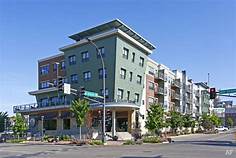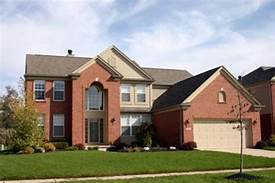OTHER NEWS
The Learning Center
Our Learning Center ensures that every reader has a resource that helps them establish and maintain a competitive advantage, or leadership position. For instance, loan originators and brokers will have one-click access to resources that will help them increase their productivity. Search topics by category and keyword and generate free videos, webinars, white papers and other resources. If you would like to add your content to the learning center, please click here or email Tim Murphy at [email protected].
Rent Growth Accelerated 3.3% in the Fourth Quarter
- Wednesday, 09 January 2019
- Commercial Lending

The annual pace of U.S. apartment rent growth accelerated to 3.3 percent in the fourth quarter, according to real-estate technology and analytics firm RealPage Inc. Momentum in annual rent growth proved substantial in the last half of the year, pushing performance in 2018 ahead of the 2.5 percent growth recorded in 2017.
Apartment owners and operators gained pricing power due to robust demand that drove occupancy to a fourth-quarter rate of 95.4 percent, up from 95 percent in late 2017. The country’s occupied apartment count climbed by 323,290 units in 2018, the strongest demand realized since 2010. Demand topped annual completions of 287,007 units.
“In contrast to the stumble seen in for-sale housing demand in recent months, the country is gaining lots of additional renters,” said RealPage’s chief economist Greg Willett. “Job production is fueling household formation among younger adults who tend to rent, and loss of existing renters to purchase is running at levels below the historical norm.”
Among the country’s large metros, local rent growth leaders are Las Vegas and Phoenix, each posting price jumps of 7.4 percent in 2018. Rent growth reaches 5 percent in Orlando. Several California markets also are experiencing big rent increases, with prices up 4.3 percent to 4.8 percent in Sacramento, San Diego, San Jose, Riverside-San Bernardino and San Francisco.
Some small metros are experiencing even stronger rent boosts. Rents are up 21.3 percent in the West Texas Oil Patch markets of Midland and Odessa, while price increases between 7 percent and 7.9 percent are occurring in Gainesville, Fla.; Eugene, Ore.; Reno, Nev., and Tucson, Ariz.
Houston’s 0.3 percent rent growth is the weakest performance among big metros. Slight rent cuts of less than 1 percent are occurring in five small markets: College Station, Texas; Corpus Christi, Texas; Davenport, Iowa; Baton Rouge, La.; and Fargo, N.D.
Building in the U.S. apartment sector remains aggressive. Within properties already under construction, there are 319,123 units slated to complete in 2019. However, delivery delays largely tied to labor shortages are routine, so this year’s new supply probably will fall a bit short of the 300,000-unit mark.
Near-term new supply leaders include Dallas, Los Angeles, Washington, D.C., Seattle and Atlanta. Dallas has the most product on the way, just over 27,000 units. Adding in the 7,000 or so apartments under construction in adjacent metro Fort Worth pushes ongoing building to nearly 35,000 units across North Texas.
“With so much high-end new product finishing in the near term, there will be a scramble to attract resident prospects in the luxury apartment niche,” said Willett. “At the same time, vacant units available to lease can be very difficult to find in properties in the middle to lower end of the pricing spectrum. Few renters are moving around within the nation’s more moderately priced apartment stock, in part just because there are so few housing options available for all but the most affluent renters.”
Read more...
Balfour Acquires Multifamily Property In Memphis
- Monday, 07 January 2019
- Commercial Lending

Balfour Beatty Communities has acquired the Preserve at Southwind, a 306-unit apartment building located in Memphis.
The latest addition to Balfour Beatty Communities’ multifamily portfolio was completed as part of a joint venture with ApexOne Investment Partners and American National Insurance Co. and marks the company’s first investment in Memphis. Newmark Knight Frank served as the broker for the acquisition. Built in 2000, the Preserve d offers 1-, 2- and 3-bedroom apartment units ranging from 700 to 1434 square feet of living space.
“We are excited to enter the Memphis market with the acquisition of Preserve at Southwind,” said Michael Price, senior vice president of residential transactions for Balfour Beatty Communities. “The area shows considerable promise for continued growth, creating increasing demand for well-located, quality apartment homes. We look forward to capitalizing on that demand through a series of targeted property renovations and our world-class management services.”
Renovations to the Preserve will include updates to apartment home interiors, amenities and common areas. Balfour is a national residential real estate investment and management company with more than $6 billion in residential assets.
Read more...
Freddie Mac Closes its First Non-LIHTC Loan
- Monday, 31 December 2018
- Commercial Lending

Mortgage banking firm Merchants Capital has secured financing for the development of a $19.7 million mixed-income workforce housing community in Rochester, Minnesota. Merchants Capital secured the loan through the first Freddie Mac Non-LIHTC Forward Commitment on behalf of Real Estate Equities.
Technology Park Apartments, the 164-unit affordable housing complex, will help to ease the city's affordable housing crisis, as Rochester was recently ranked one of the lowest metropolitan statistical areas in the U.S. for housing affordability by Nationwide Economics, a research firm. The project closed on Sept. 5, 2018.
"We appreciate the opportunity to assist in the development of this housing community and the chance to help close Rochester's affordable housing gap," said Michael Dury, president of Merchants Capital. "We were able to simplify the process with our ability to provide the construction financing through our parent company, Merchants Bank, and also offer the Freddie Mac Non-LIHTC Forward Commitment product for the long-term permanent financing."
The apartments were financed through a 10-year Non-LIHTC loan where the interest rate was locked at the closing of the construction loan. Non-LIHTC forwards are unfunded, forward commitments for affordable housing developed by nonprofits and subsidized, rent-restricted affordable housing that for-profit developers can use for their new multifamily construction or substantial rehabilitation projects.
"We are very excited to be on the forefront of developing a modern workforce housing product that is not heavily reliant on government funding sources," said Alexander Bisanz, director of acquisitions at Real Estate Equities. "Partnering with the Greater Minnesota Housing Fund to provide low-cost, mission-driven equity, as well as structuring attractive financing with Merchants Capital, truly allowed us to get this project off the ground."
Read more...
Freddie: Single-Family Housing Largest Source of Rentals in U.S.
- Friday, 28 December 2018
- Commercial Lending

The single-family rental market provides housing to 25 million Americans and is valued at more than $4 trillion. In fact, it’s the largest source of rental housing in U.S., and plays a particularly important role in rural areas where they account for two-thirds of the rental housing stock, according to “Single Family Rental: An Evolving Market” a white paper from Freddie Mac. It found that the secondary market for SFR home loans is limited.
“The single-family rental market is an important segment of the housing market and the data reveal it to be an affordable housing option for many American families,” said Steve Guggenmos, vice president of multifamily research and modeling. “Much of the single-family rental market is primarily driven by small investors, and there is not a uniform set of terms and credit standards for loans on SFRs. Freddie Mac’s pilot program in this space sought to demonstrate how secondary market infrastructure focused on SFRs might benefit the marketplace.”
The most important takeaways from the report are as follows:
- The SFR market makes up about half of the overall rental market. It is the single largest segment of the rental market by valuation and households served.
- Small investors dominate the SFR space. The overwhelming majority of SFRs are owned and operated by individuals or very small investors.
- There is a slow-growing middle-tier investor market with further potential for growth. Large-scale institutional investors are a new entry into the market but are limited to a select few firms that own approximately 1 percent of SFRs.
- Secondary market opportunities for SFR loans are limited. Apart from these select few institutional investors with access to the capital markets, there are limited secondary market opportunities for SFR loans with middle-tier investors that would provide liquidity and stability, and there is not a uniform set of terms and credit standards for loans on SFRs.
The pilot included both middle-tier investors and affordable homes in select large-investor portfolios and demonstrated how a secondary market infrastructure focused on SFRs affordable at 80 percent of the area median income could be created and operated, particularly for middle-tier investors, according to Freddie Mac.
Read more...